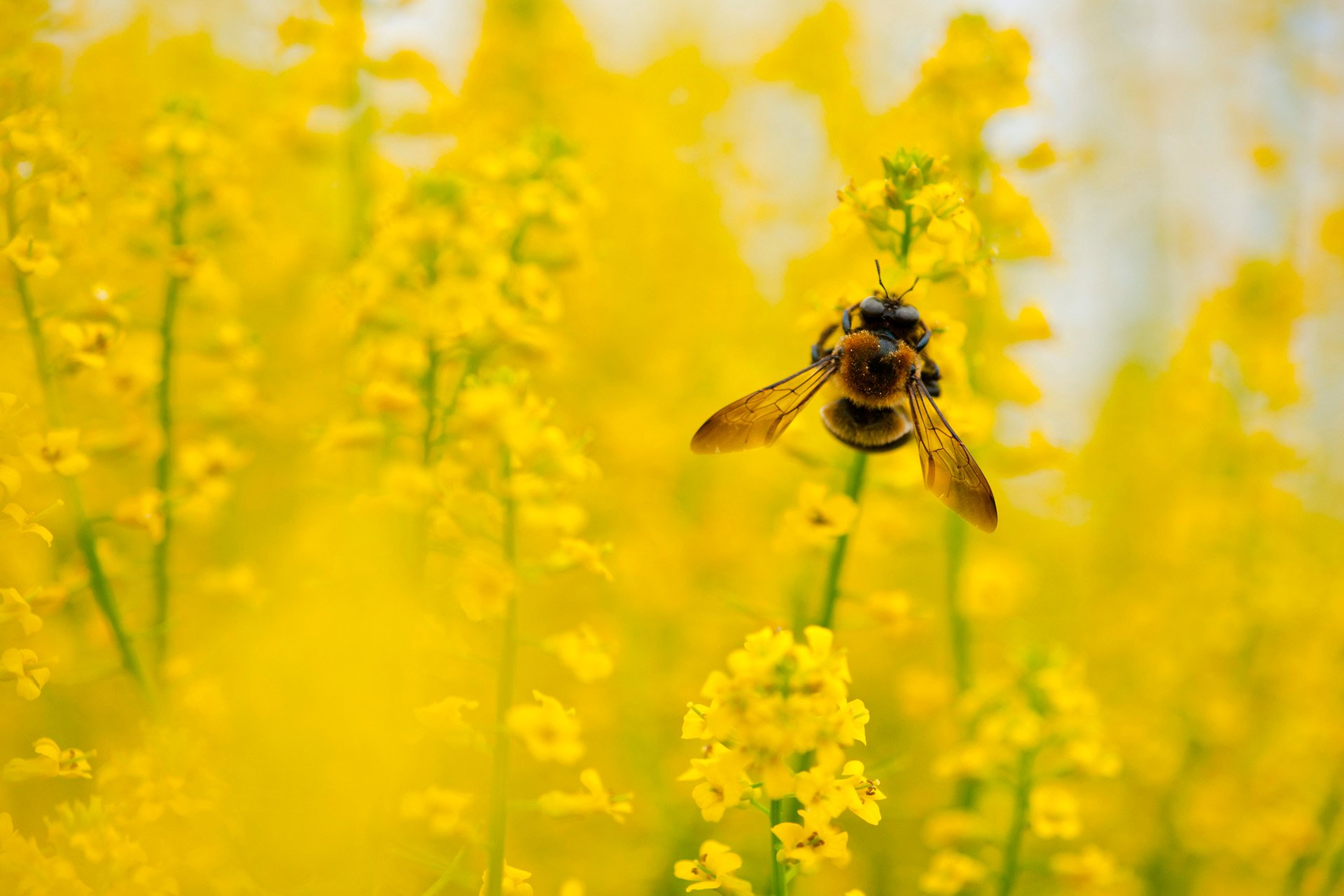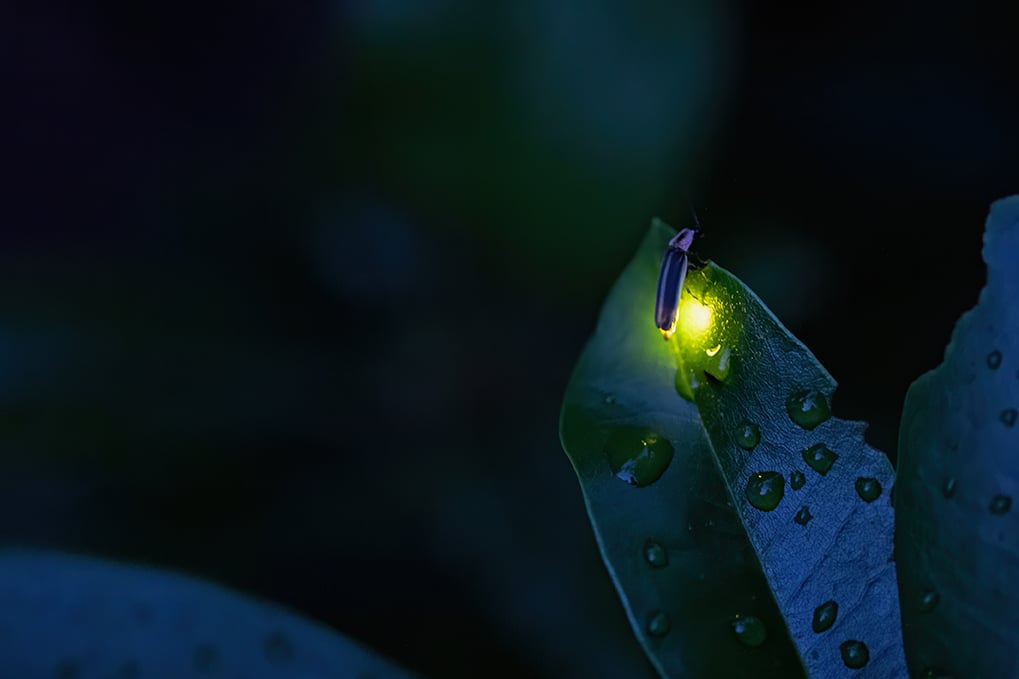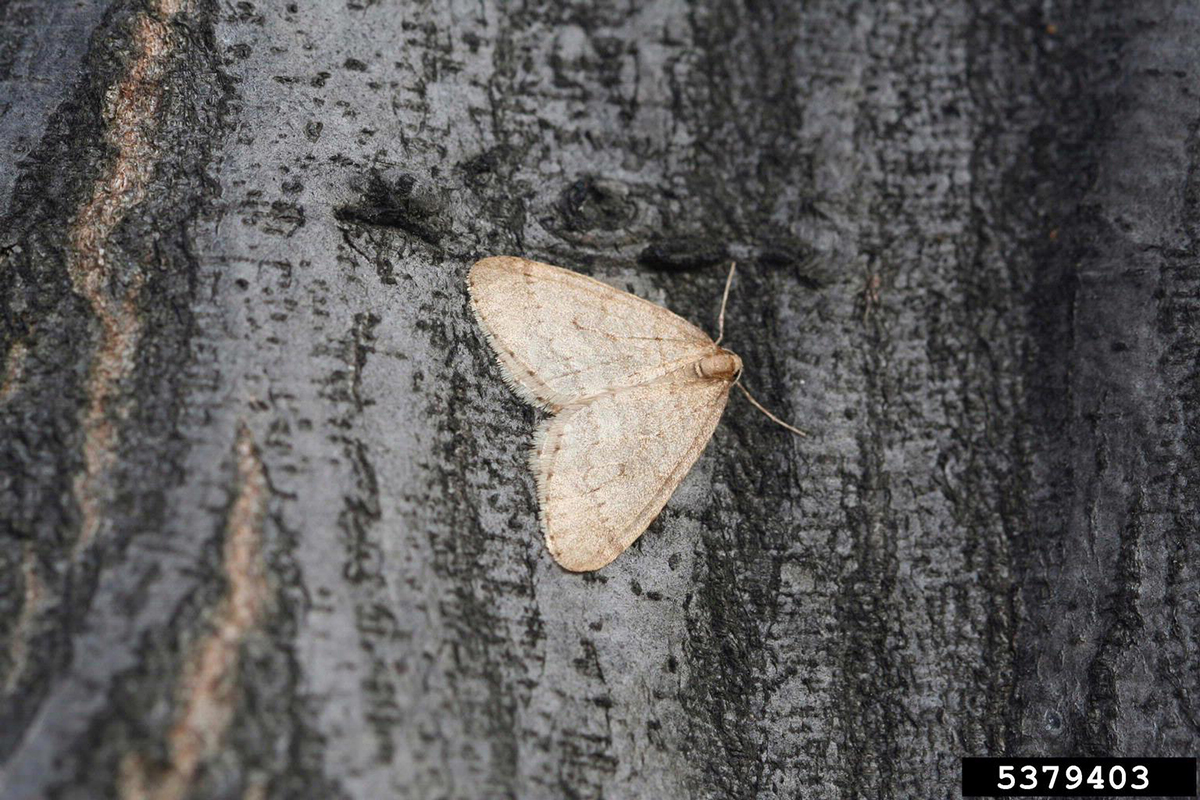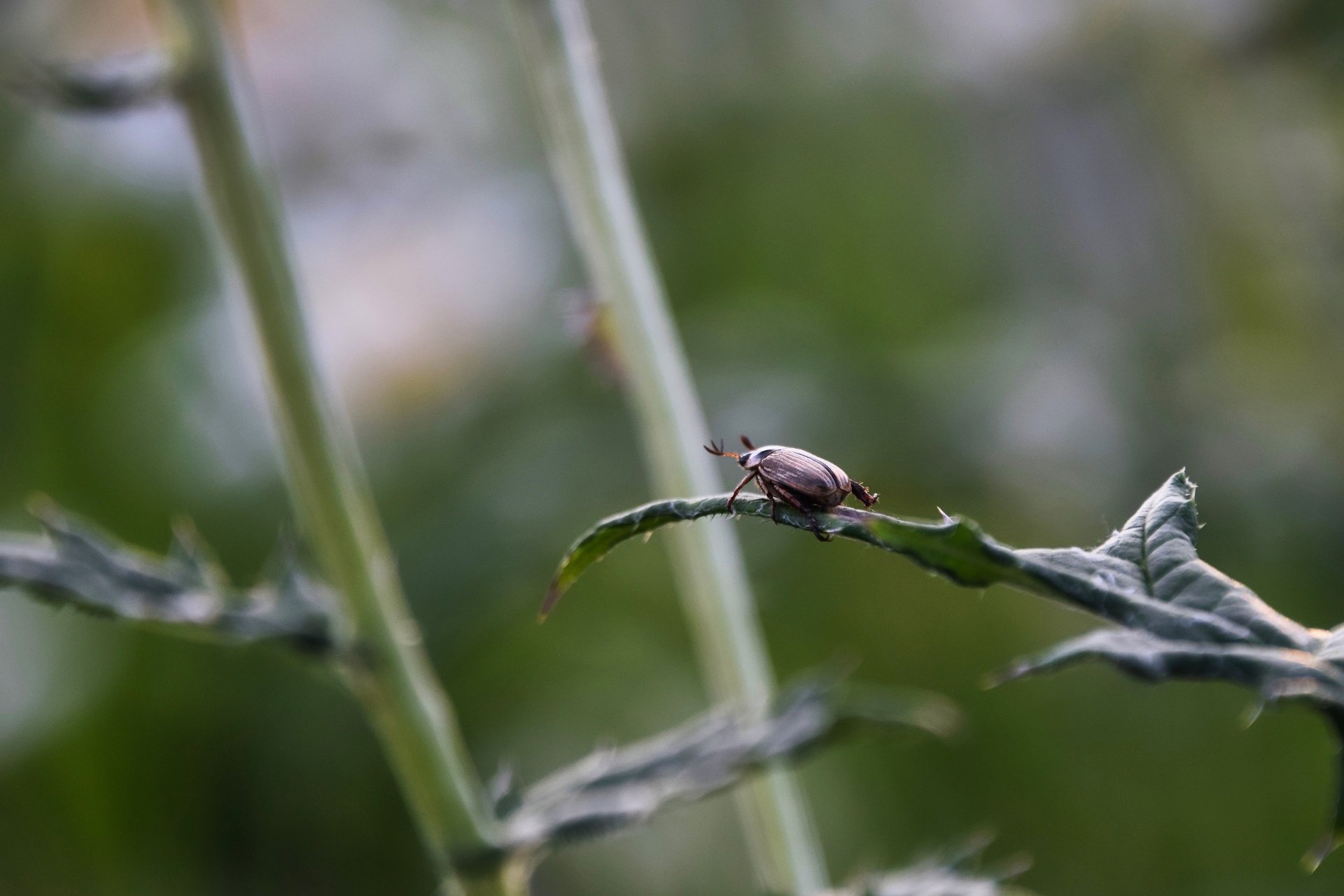Insects & Arachnids
Bees & Wasps
Bees and wasps (including hornets and yellow jackets) can inspire fear because some of them sting. However, these fascinating insects are vitally important to nature and to our economy.
Many are important pollinators of food plants that we rely on. Some wasps are among our most effective controls on crop-eating insects. And, of course, honeybees give us tasty honey and useful beeswax.
Bees vs Wasps
Both bees and wasps belong to the order Hymenoptera, which also includes ants and sawflies. There is a great deal of variation among these insects. Broadly speaking, and with some exceptions, bees have round bodies and flattened back legs. They are often fuzzy, which helps them collect and hold pollen when they visit flowers. Wasps tend to have skinny waists and streamlined bodies and legs, which are perfect for swift hunting.
Types of Bees and Wasps
There are many species of bees and wasps in Massachusetts, and they come in a wide variety of sizes, shapes, and colors. Some are social, while others are solitary.
Social vs Solitary
Some bees and wasps are “social”. This means that they form a colony with multiple individuals who have different roles, from caring for the young to building the nest to reproducing. A colony of social bees or wasps builds an elaborate nest and will defend it with varying degrees of aggression.
Except for honeybees, social bee and wasp colonies last for only one season. All the colony members die in the fall, except the young queens, which find a sheltered place to overwinter. These queens emerge in the spring to choose a nest site, lay eggs, and start a new colony.
Other bee and wasp species are “solitary”—they may work together to defend a nesting area, but they don’t form colonies. Typically, the female builds the nest and deposits food for her offspring. Adult male and female solitary wasps and bees typically overwinter beneath the ground and emerge in the spring to begin reproducing.
Social Bees
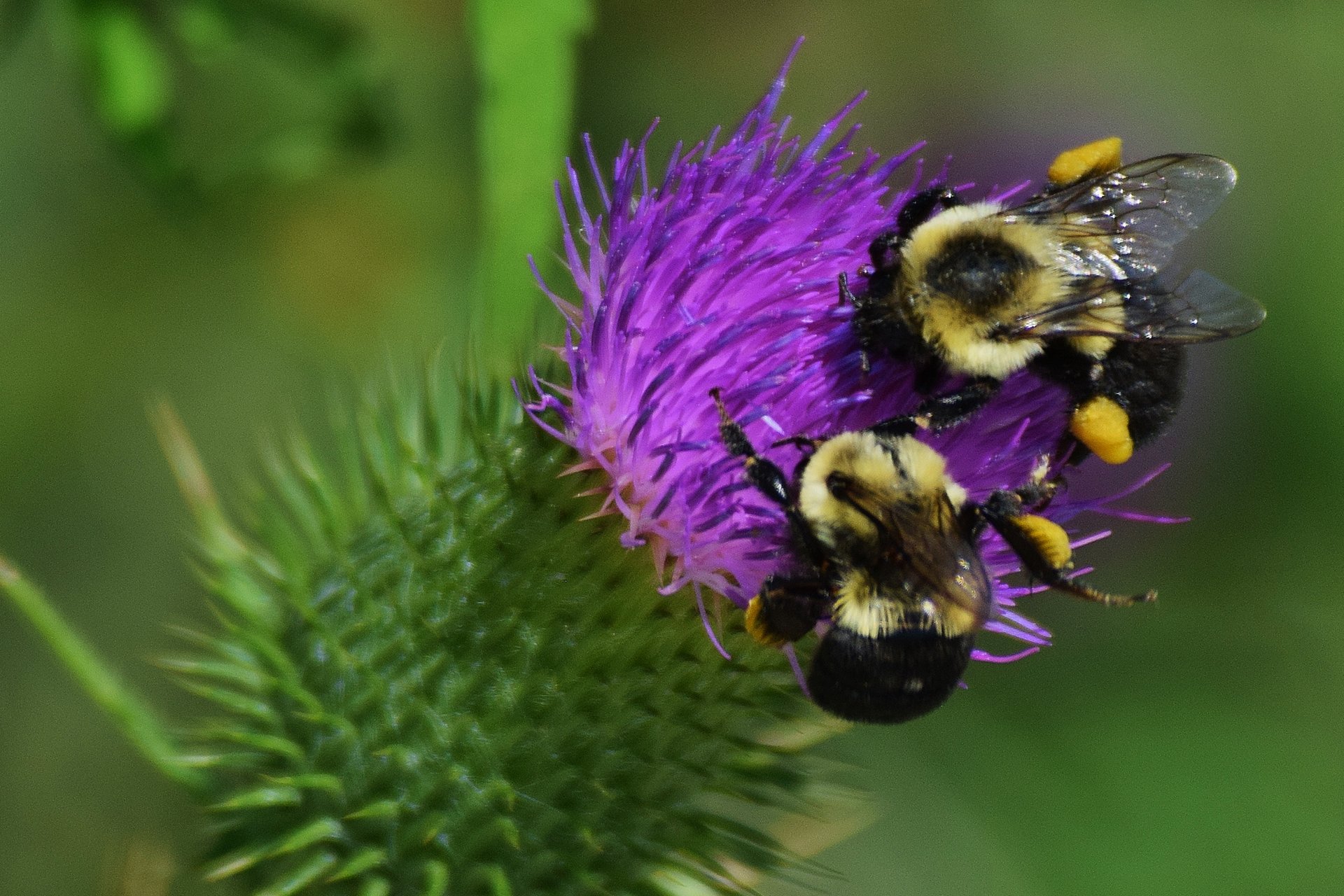
Bumblebees (genus Bombus)
These familiar insects are stocky, fuzzy, and yellow (or orange) and black. The queen bumblebee typically chooses a nest site that is on or under the ground. She lays her eggs, and 10 days later a relatively small number of worker bees are born. These workers gather nectar and pollen, make honey, and care for the nest and young. In the late summer, drones (males) and queens are born, and they mate. Most of the colony dies with the onset of cold weather, but the queens overwinter in leaf litter.
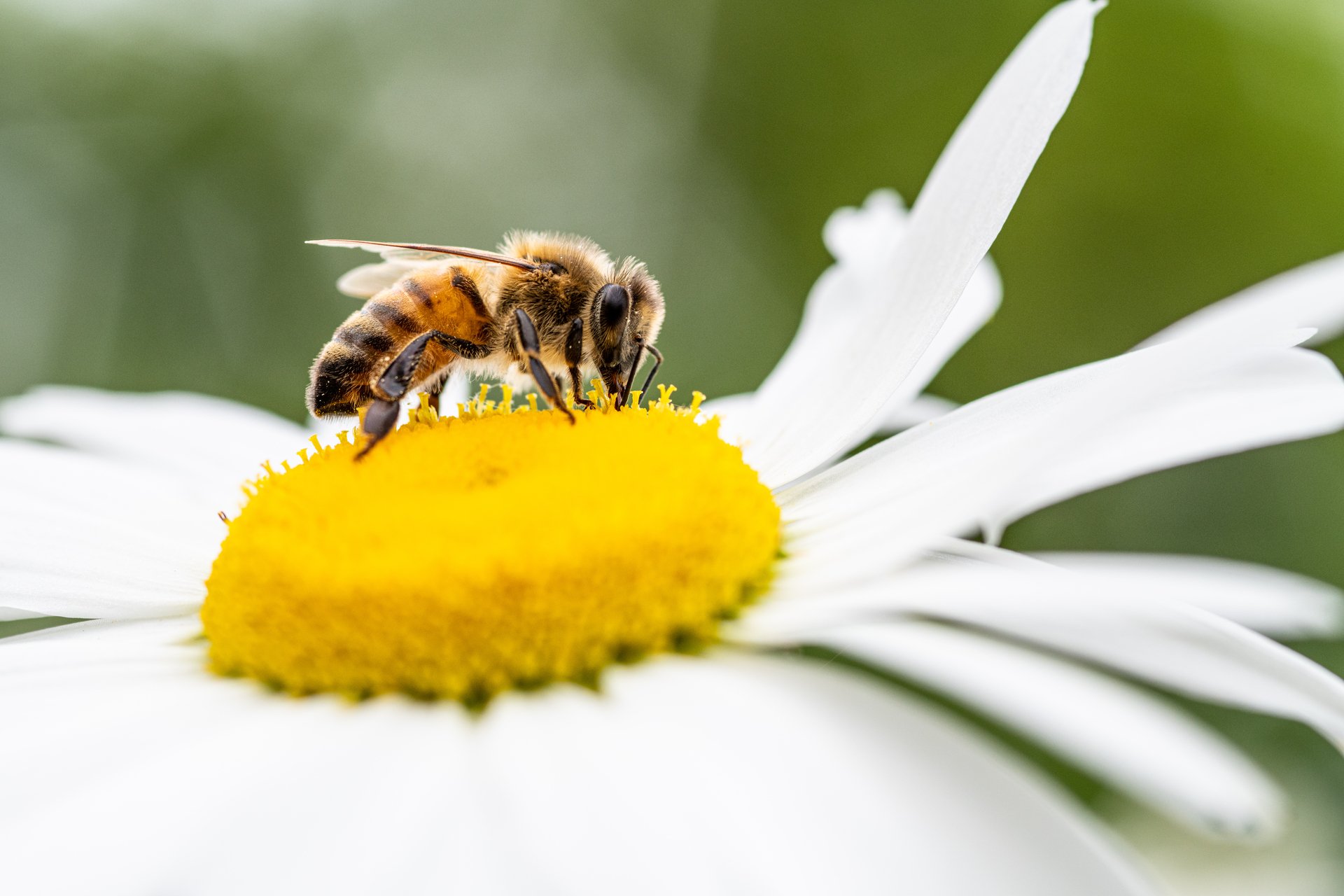
European Honeybees (Apis mellifera)
Imported from Europe for their honey, beeswax, and pollination abilities, these familiar bees are black and gold. Much of our honeybee population lives in beekeepers' hives, and the rest build nests in tree cavities and in the eaves and walls of buildings. Each hive consists of a queen (who lays the eggs), female workers (who gather food and maintain the nest), and male drones (who mate with new queens). If a young queen returns to the nest after a mating flight, the old queen will gather a swarm of hundreds of workers and leave the nest to start a new colony.
Solitary Bees
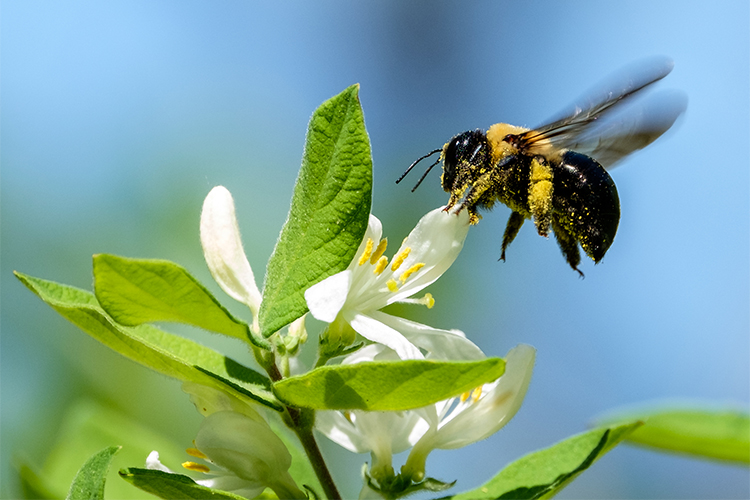
Carpenter Bees (Xylocopa virginica and other species)
These insects look like bumblebees, but they have a completely black, shiny, hairless abdomen (the rear section). They mate in April or May. The female carpenter bee starts looking for a suitable nest site, such as weathered areas on buildings, fences, or telephone poles, and people often report seeing them hovering around buildings. She chews into the wood and lays her eggs. Adult carpenter bees emerge in August but return to the nest to overwinter. Carpenter bees seldom pose a threat to humans, as they rarely sting. However, their nest tunnels occasionally cause minor damage to wooden buildings.
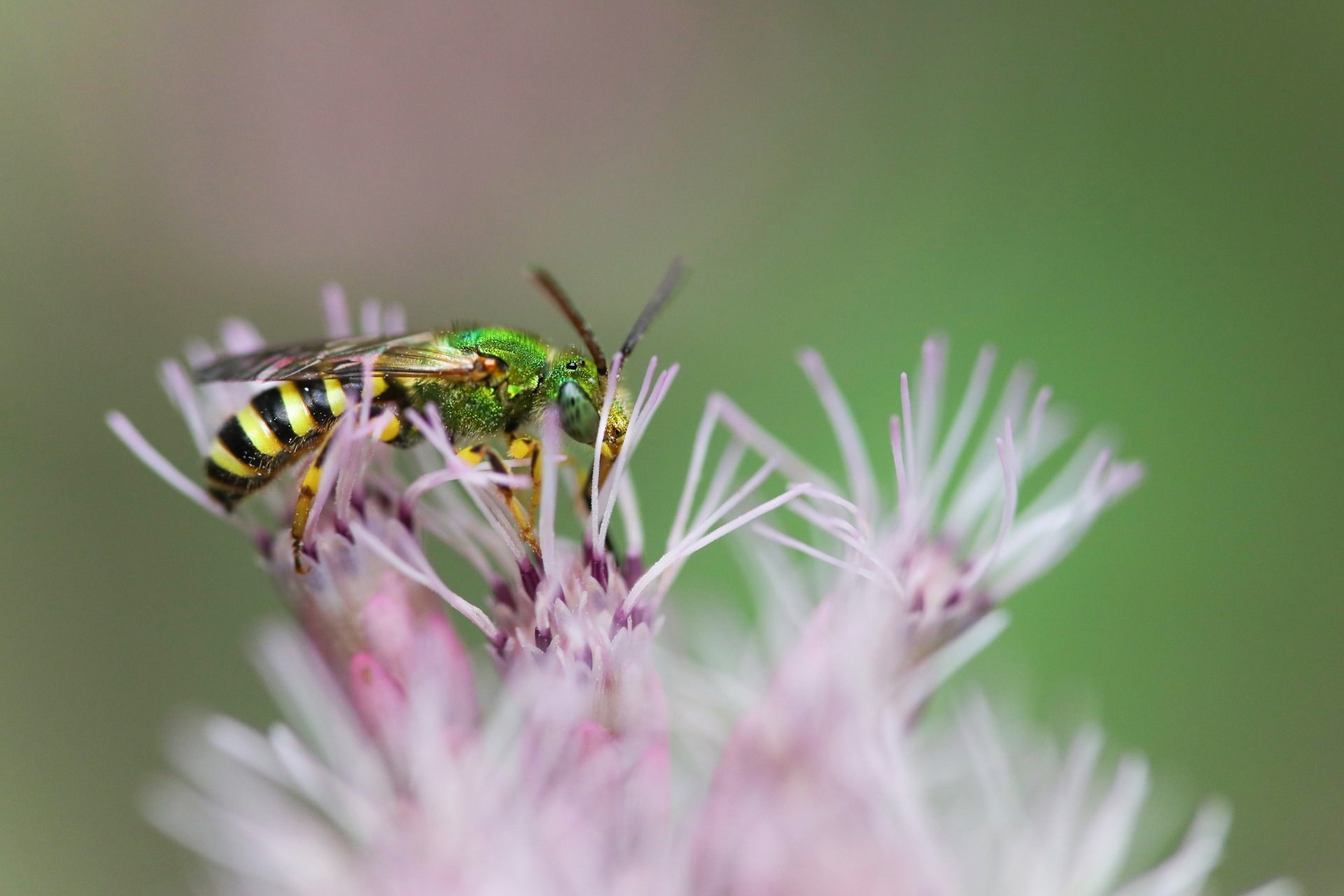
Sweat Bees (family Halictidae)
Many, but not all, sweat bees are solitary. Their name comes from their attraction to human perspiration. These small, fuzzy bees come in several colors, but many of them are metallic green. They nest in the ground or in wood.
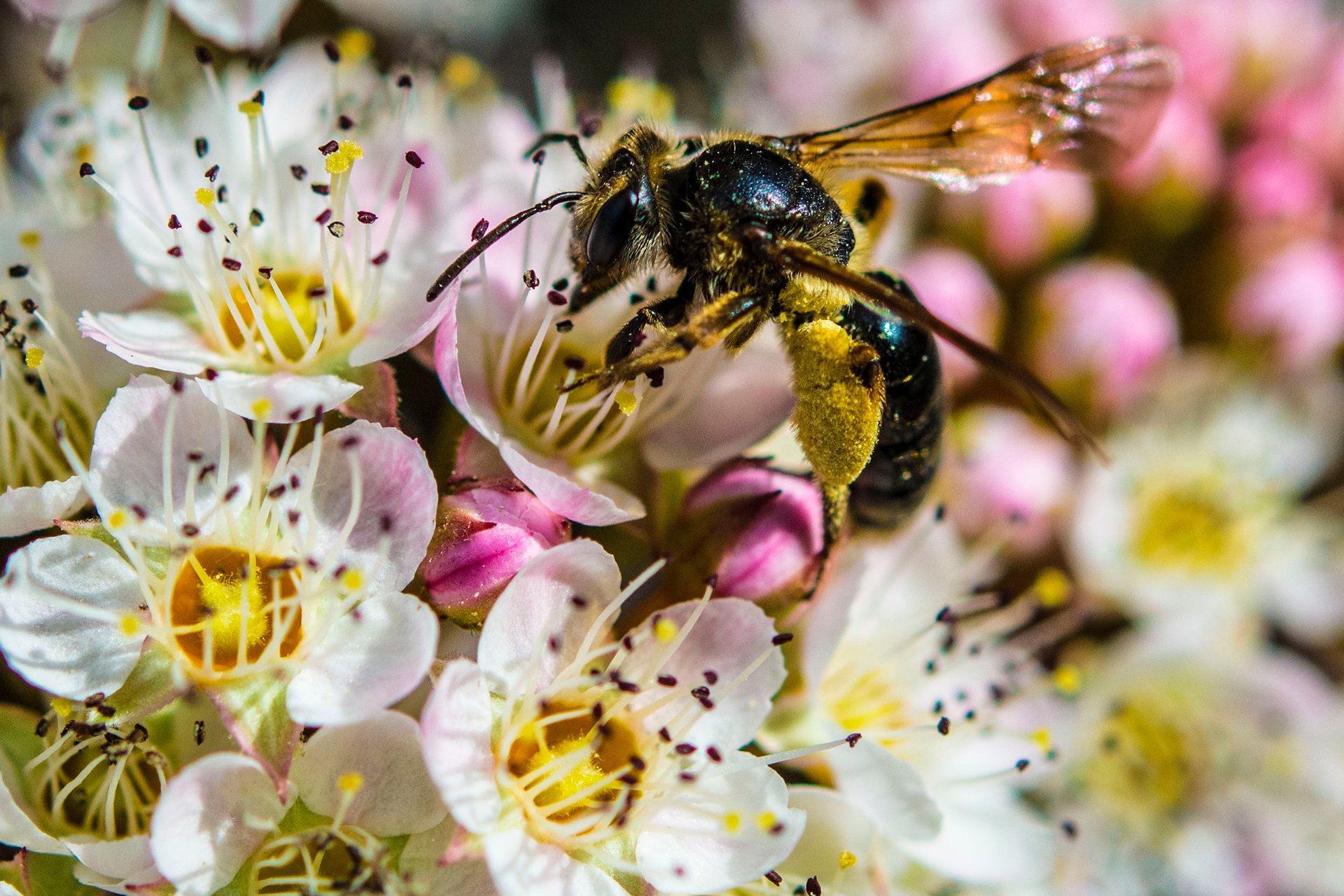
Mining Bees (family Andrenidae)
These bees are typically hairy and brown or black. They dig burrows along dirt paths and in other places with sparse vegetation.
Social Wasps
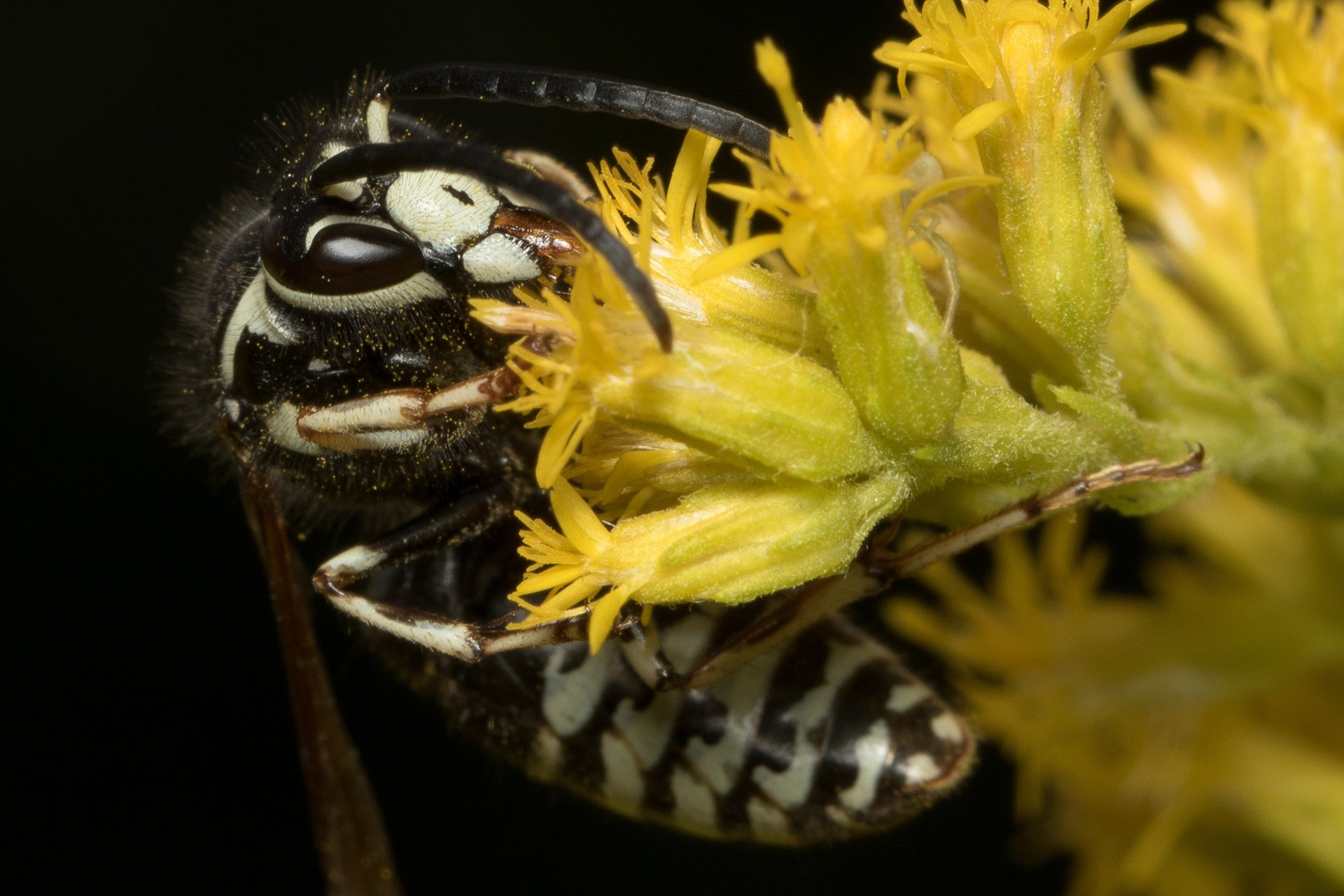
Bald-faced Hornets (Dolichiovespula maculata)
They are black and white (or yellowish white), with a white face and white stripe at the end of the abdomen and can grow over an inch long. Their gray, papery nest is often found hanging from a tree branch or under building overhangs. Larval bald-faced hornets are fed insects, and adults consume nectar and fruit juices as well as some insects. This species can be very aggressive, and will defend its nest with a painful sting.
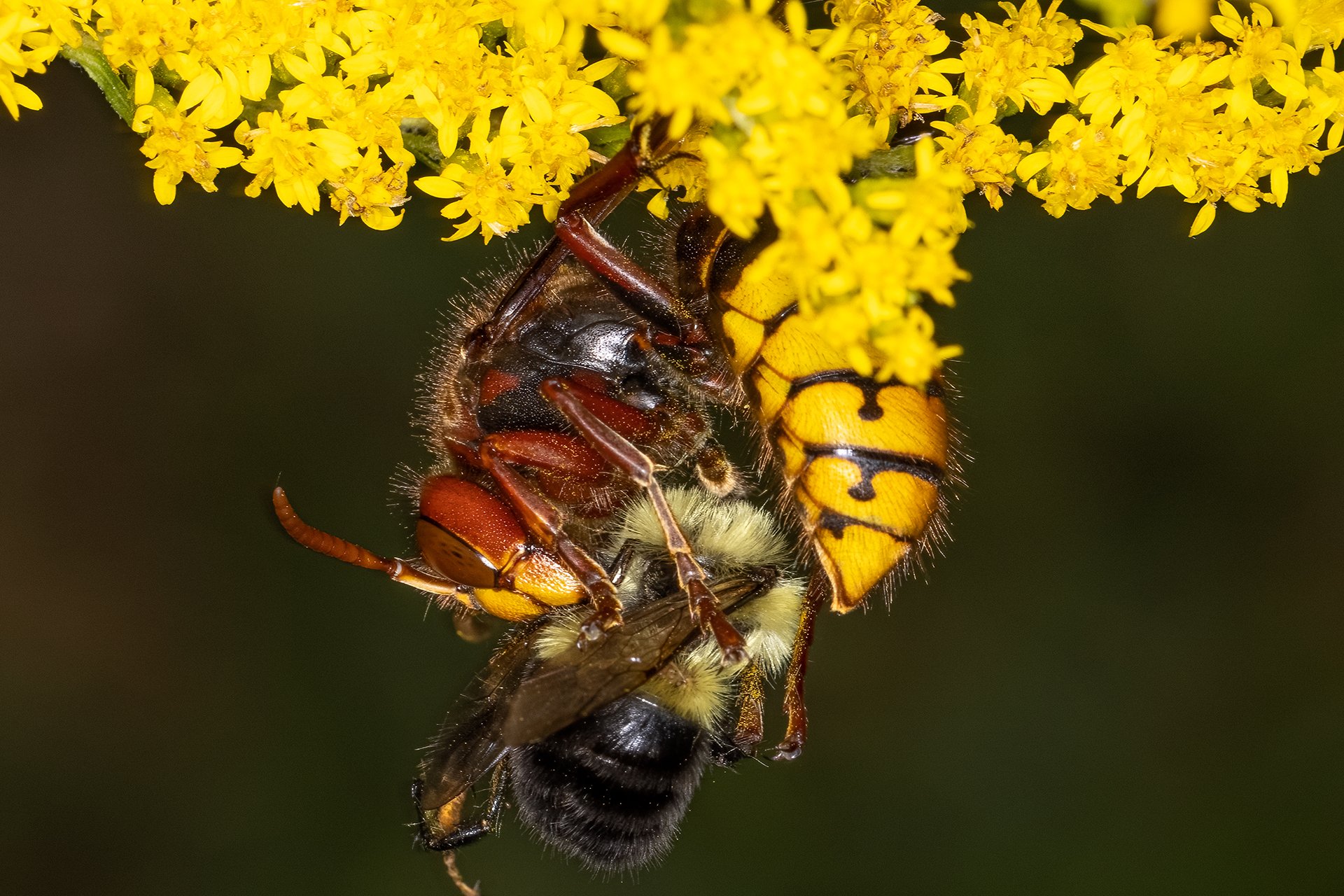
European Hornets (Vespa crabro)
True to their name, European Hornets are large (up to 1.5") and brown with yellow markings. These insects were introduced from Europe in the 1800s. Their nests, built in the hollow of a tree or in a structure like a porch or deck, consist of layers of combs within an outer covering. Adults mostly eat nectar and insects, and they will bite into fruit to drink the juice. The young are fed pre-chewed insects. Members of this species are very defensive of their nests and can deliver an extremely painful sting.
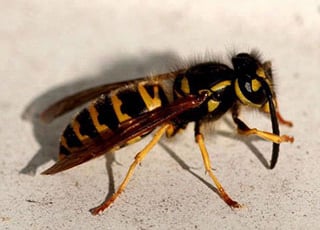
Yellow Jackets (Vespula species)
You may have seen these insects buzzing around your picnic, wavering from side to side before landing. Yellow jackets build their nests underground, in the hollows of trees, or in the walls of buildings when there is an opening or crack in which to enter. They can be a nuisance at the picnic table. Give their nests plenty of space, as they can aggressively defend with a painful sting.
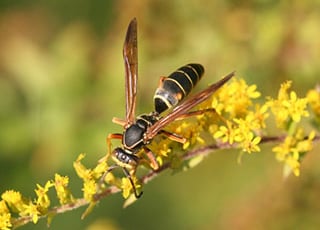
Paper Wasps (Polistes fuscatus)
These wasps build small, single-comb paper nests that are open from the bottom and hang from trees and shrubs or from the eaves or ceilings of buildings. The adults feed on nectar, but the larvae are fed insects. Females often come into homes as cold weather sets in. They are also fond of the food at picnic tables but are more tranquil than yellow jackets.
Solitary Wasps
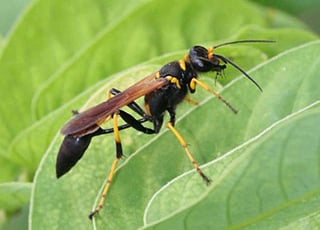
Mud Daubers (Sphecidae or Crabronidae family)
Three species of these long, slender wasps can be found in Massachusetts. Black and yellow mud daubers (Sceliphron caementarium) and organ-pipe mud daubers (Trypoxylon politum)—which are black-colored—build mud nests for their young, often on sheltered parts of buildings. Blue mud daubers (Chalybion californicum) are parasitic, and they’re often found drinking water from puddles; they use the water to soften the nests of other mud daubers and break in. Then, they remove the eggs, insert their own, and reseal the opening.
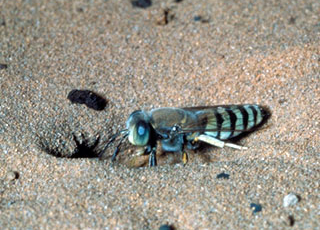
Sand Wasps (Bembix americana, Bembix pruinosa)
These wasps have large eyes and black-and-white-striped abdomens. Although they are considered solitary, dozens of females will gather in a sandy area to excavate individual nests and scare away intruders. The female digs a burrow in the sand, lays a single egg, and brings prey (usually flies) for the developing larva.
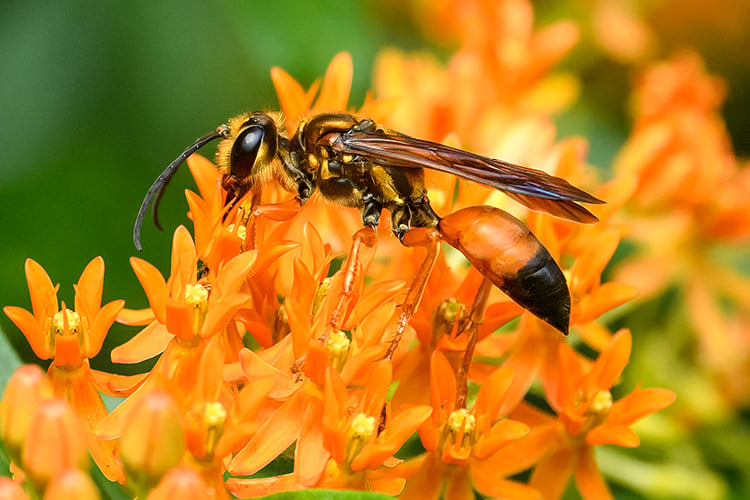
Great Golden Digger Wasps (Sphex ichneumonea)
These insects’ legs and half of their abdomens are reddish orange, and they can grow to be 1” long. The female digs an underground nest, provisions it with one or more paralyzed grasshoppers, deposits a single egg, then seals the opening and departs. The young overwinter in the nest and emerge the following year.
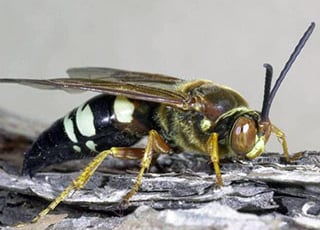
Cicada Killer (Sphecius speciosus)
These insects are very large—they can grow up to 2” long—but are rarely aggressive. They have a thick body and are reddish brown or black with dull yellow stripes on the thorax and abdomen. True to their name, they hunt for cicadas, flying high above tree trunks and branches. The female cicada killer digs a burrow in an open area, provisions it with two or three cicadas for her offspring to feed on, and then seals the opening and flies off.
What to Do When You Find a Bee or Wasp Nest
You may come across a bee or wasp nest on a building or on the ground. Paper wasps usually build their nests high enough on buildings that they’re not problematic; yellow jackets, on the other hand, may enter buildings through openings under shingles or siding to construct their nest in the wall cavity. These nests will be gone by winter. With most species (though not honeybees), only the queen lives through the winter, and she leaves the nest to wait out the cold in a sheltered place.
If you find a ground nest that might pose a threat, the first step is to observe it. Solitary species may be seen excavating tunnels in the ground for several days, but then usually leave the area. Though they can sting, they are usually non-aggressive. On the other hand, social species—especially yellow jackets—will aggressively defend their nest.
If a nest absolutely must be removed, you should not try to do it yourself. You may be attacked by the colony’s guard bees, you may discover that you have an allergy, or you may find that your store-bought spray can’t reach inside the nest. Contact a professional pest-control company. Be sure to ask:
- Does the company offer a successful non- or less-toxic method for controlling bees or wasps?
- If an insecticide is used, what will it be and how is it applied?
- What measures will be taken to ensure that the insecticide does not enter the living space?
- What does the warning label say about the toxicity of the product and its effect on humans, animals, and the environment? How long will the substance remain toxic?
Why Bees and Wasps Are Important
Bees and wasps are pollinators. Pollinators help plants reproduce by spreading a powdery material called pollen among flowers of the same species. When bees and wasps visit plants for their nectar or pollen, they carry the life-producing material to and from other plants. Bees and wasps pollinate not only flowers, but also a majority of fruits and vegetables used in agriculture. Without pollinators, our food system, and larger ecosystems as a whole, would collapse.
Threats Facing Bees and Wasps
Unfortunately, we’re witnessing a drastic decline in pollinators, including bees and wasps. Populations of three bumblebee species in the eastern United States have declined by over 90% in the past 30 years. This decline is most likely due to a combination of issues, including habitat loss, climate change, pesticide use, pathogens, and changes in the distribution of native species.
How Mass Audubon is Supporting Bees and Wasps
Mass Audubon works at our wildlife sanctuaries and beyond to ensure that the nature of Massachusetts continues to thrive. By protecting habitats that support native plant life, advocating for policies that combat climate change, and educating our communities about the values of, and threats to, pollinators, we support these critical insects. Learn more about our work
How You Can Support Bees and Wasps
There are many ways you can support bees and wasps so that they can continue to pollinate the plants we depend on.
Do not use harmful pesticides or support products that are grown with pesticides. Plant native species that pollinators are attracted to, like goldenrod, wild columbine, and asters, and remove invasive species like Japanese knotweed, perennial pepperweed, and garlic mustard. Support land protection initiatives and advocate for policies that combat climate change.
Amateur beekeeping has also had a resurgence in recent years. Set up hives on the edge of your property to give local colonies a good home or buy your honey from local beekeepers to support their efforts.
Mass Audubon supports pollinators, including bees and wasps, every day, but we couldn’t do it without the support of our 160,000+ members. Help us support bees, wasps, and pollinators like them, by becoming a member today.
Upcoming Bee Programs
See all programsBeekeeping For Beginners
-
Drumlin Farm Wildlife Sanctuary, Lincoln
-
5 classes starting
Tuesday, February 24
7:00-9:00pm
Adults
April Vacation Adventure Days: Ages 9 - 12
-
Ipswich River Wildlife Sanctuary, Topsfield
-
4 classes starting
Tuesday, April 21
8:30am-3:00pm
Age 5 - 11
April Vacation Adventure Days: Ages 5 & 6
-
Ipswich River Wildlife Sanctuary, Topsfield
-
4 classes starting
Tuesday, April 21
8:30am-3:00pm
Age 5 - 11
Stay Connected
Don't miss a beat on all the ways you can get outdoors, celebrate nature, and get involved.



